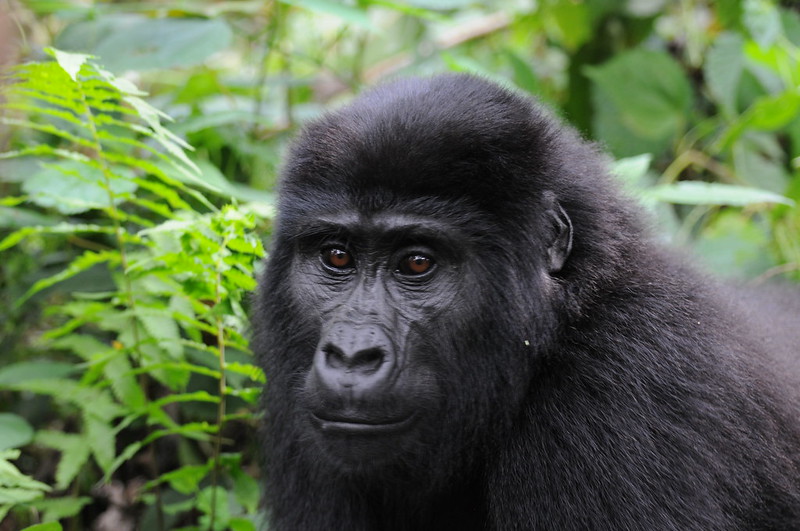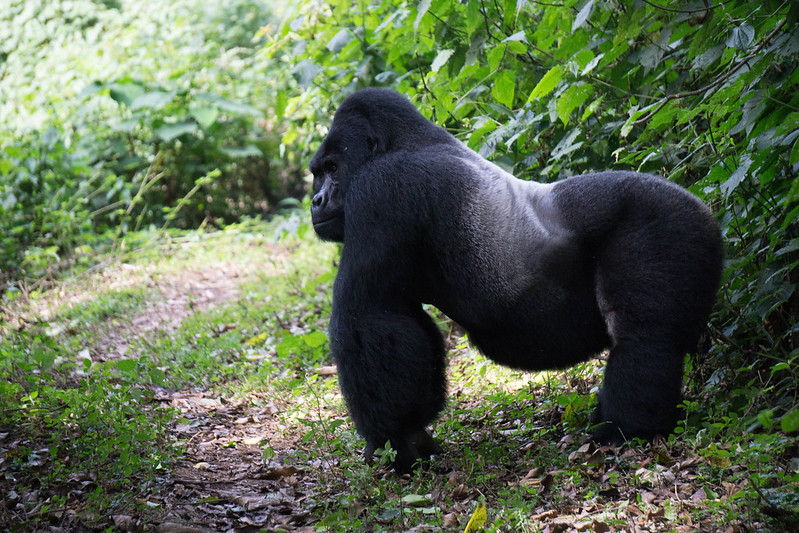
How Long Does Gorilla Trekking Take? Is if Difficult? How Fit Are You?
How Long Does Gorilla Trekking Take? Is if Difficult? How Fit Are You?
The following are the most crucial inquiries travelers have regarding the physical requirements of gorilla treks in Rwanda and Uganda before making a reservation.
- How Hard Is Trekking with Gorillas?
- Do I Have the Fitness to Trek with Gorillas?
- What is the duration of the gorilla viewing trek?
- Will I be carried if I feel tired?
terrain for gorilla trekking
For individuals of all fitness levels, gorilla trekking is an excellent kind of exercise. Nonetheless, some hiking and trekking routes could be more challenging than others.
Prior to embarking on any gorilla trekking or hiking journey, it is crucial to determine your degree of fitness. Trekking can still be enjoyable if you are not extremely fit, but you might want to stick to simpler trails.
There is bound to be a gorilla trekking track that suits your level of fitness among the several options available in Volcanoes National Park in Rwanda and Bwindi Forest National Park in Uganda.
How Hard Is Trekking with Gorillas?
Make sure you’re physically fit for the challenge if you’re thinking about going on a gorilla trekking tour to Uganda.
There are a few things to consider, but most people who are in good health and physical condition will have no trouble finishing the walk.
The Elevated Altitude
First of all, the air will be thinner than usual because you will be walking at a high altitude. It’s crucial to go slowly because this can be hard on your lungs.
The Terrain Second, a certain amount of energy is needed due to the dense flora and often steep terrain in Bwindi Impenetrable National Park.
Good luck.
Lastly, it is impossible to estimate the duration of your journey. While some groups may travel for six hours or longer before encountering any gorillas, others may establish contact with any within forty-five minutes. Therefore, you should be alright as long as you are aware of these difficulties and possess a certain level of fundamental fitness. Enjoy yourselves!
How much time does it take to trek to see gorillas?
An average gorilla walk lasts one to six hours. This is dependent on where and when the gorillas were last sighted. This period of time covers starting at the trekking site, seeing the gorillas, and then heading back to the National Park meeting spot.
-The Gorilla Trek lasts from one to six hours.
It takes at least five hours to complete the Gorilla Habituation Experience. (Includes walking back and forth.)
Will I Be Carried If I Get Weary or Hurt While Trekking?
Porters, sedan chairs, and trekking poles can be arranged in advance, and you can join other groups on easier and shorter walks. Having porters carry a sedan chair will help those who need it, even if it would increase the cost of the excursion.
Because the ground may get muddy during the rainy season, which runs from June to September and December to February, trekking in the dry season should also be taken into consideration for those who are worried about the complexity of the terrain.
Do I Have the Fitness to Trek with Gorillas?
You should have little trouble navigating the majority of gorilla trekking and hiking trails if you are in a relatively good level of physical condition. However, before taking on any lengthy or challenging routes, you might want to increase your level of fitness if you are not accustomed to working out on a daily basis.
You can handle practically any trekking or hiking trail if you are in excellent physical condition. To ensure that the route is within your capabilities, it is usually a good idea to do some study on it before you try it.
Trekking and hiking are excellent methods to get some exercise and fresh air, regardless of your level of fitness. Thus, venture out and discover the world!
Activities to Maintain Your Fitness Before Gorilla Trekking
Increase the Workout Intensity
As your hike date approaches, it is advised that you progressively increase the length and intensity of your trekking and hiking training. By doing this, you may prevent injuries and make sure your body is ready for the demands of the path.
Boost Your Cardiovascular Activity
Running, cycling, and swimming are all excellent cardiovascular exercises to increase your general level of fitness. Your muscle strength will increase with strength training exercises like weightlifting, push-ups, and sit-ups. Your flexibility can be enhanced by stretching exercises like yoga or pilates, which can be useful for climbing and trekking.
Select Easy Treks If at all possible
There are plenty of hiking and trekking routes in Rwanda and Uganda that cater to gorilla trekking, so you’re sure to find one that suits your level of fitness. Trekking and hiking are excellent methods to get some exercise and fresh air, regardless of your level of fitness. Thus, venture out and discover the world!
How to Get Physically Ready for Gorilla Trekking
Being physically ready before embarking on a hike is crucial. This entails being in good physical condition and having the right tools. The following advice can help you get ready for a hike:
1. Purchase the appropriate gear. Make sure your shoes and clothes are appropriate for the terrain you will be trekking in. Snacks, drinks, and a bag are also necessary.
2. Maintain a healthy body. Since hiking can be exhausting, it’s crucial to be in good physical shape before starting a hike. Begin with simple workouts like jogging or walking to acclimate your body to the action.
3. Recognize your boundaries. Avoid taking on a hike that is too difficult for you. Start with a simpler hike and work your way up to a more difficult one if you’re unsure.
4. Pay attention to your body. Take a rest if you begin to feel worn out or sore. It’s crucial to take breaks and stay hydrated while trekking.
5. Be ready for anything. Always keep a first aid kit on hand and be sure you know how to get help if you need it.
6. The elevations of the terrain
Reading through your trip notes can help you get a feel for the landscape you will be traversing on your adventure. By practicing walks that mimic the conditions as much as possible, you can also get ready for the conditions you’re likely to face.
Furthermore, keep in mind that hills can work in your favor! It will be easier to deal with them on your real expedition if you practice walking uphill more. Trekking during the dry season, which spans from June to September and December to February, is the ideal option if you’re concerned about the terrain’s difficulty.
During the rainy season, the terrain can get quite muddy, making walking more challenging. Photographers should be aware, though, that rain removes airborne dust, producing crisper pictures.
You may get ready for a fun and safe hike by using these pointers.

